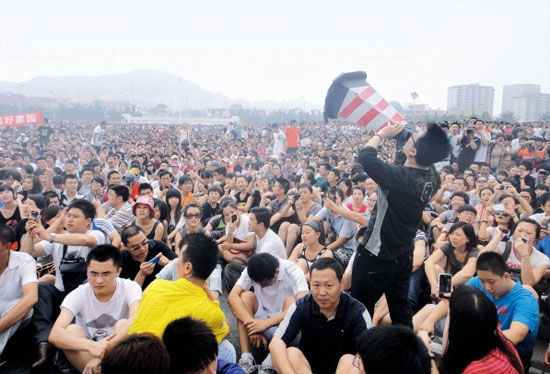Despite being the world's largest producer and consumer of the petrochemical paraxylene (PX), many in China have little knowledge about it. Lately mass protests have arisen over a series of pollution-related incidents, giving a local government pause in its hasty bid to build more PX plants.
(Ecns.cn)--PX, a carcinogenic petrochemical used to create raw materials for the production of polyester film and fabric, became a hot topic in China after more than ten thousand Dalian residents took to the streets earlier this month demanding that a PX plant be relocated over concerns of potential toxic chemical leaks.
Those activists and local residents were probably unaware that the banners they displayed were made of polyester fiber, one of the downstream products of the chemical they had demonized.
Xu Po, a senior engineer at the China Textile Industrial Engineering Institute, pointed out in an article that as the biggest producer of PX, Asia produced 24.6 million tons of it in 2008, more than 74 percent of the total production volume.
More such chemical plants will likely be built in Asian countries such as China, South Korea, Japan, India and Thailand in the next few years, he also said.
The United States is another major producer and consumer of the chemical, while the Middle East, as the world's major oil exporter, is another emerging player in the industry.
China, the biggest producer and consumer of PX, had produced around 20 percent of the world's PX as of 2010, according to Guo Chen, director of the textile department at the China International Engineering Consulting Corporation (CIECC).
Despite the high percentage, an industry insider told China Newsweek on condition of anonymity that the crucial techniques for manufacturing and processing the chemical are heavily dependent on foreign companies, who monopolize the industry.
The cost of the patent is as much as 10-15 percent of the total investment, the insider said.
As a result, during its 12th Five-Year Plan period (2011-2015) China is determined to invest in the processing technique to increase its technical competence.
Location is everything
A product closely connected to petroleum, PX is highly combustible, a major problem in terms of transportation. That's why most of the plants in China are located in coastal provinces such as eastern Shandong and Fujian, despite the fact that inland provinces are well known for the textile industry.
There is a "three-near" principle when the government decides to build such a plant, another anonymous industry expert told China Newsweek. It must be "near" an oil refinery, "near" PTA (Purified Terephthalic Acid) factories and "near" rivers or the ocean.
The deficiency in such plans is the environmental repercussions, said Pan Yue, vice minister of the State Environmental Protection Administration (SEPA).
The industry expert agreed, saying that if exportation goes wrong, the damage is far more devastating for plants built near water than those built inland.
In addition to concerns over water pollution, the plants are also located closer to populated areas due to the expansion of Chinese cities.


















